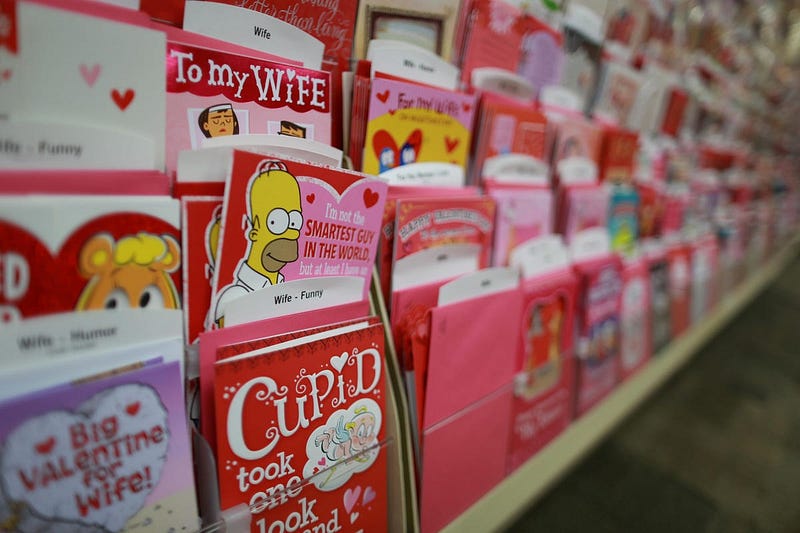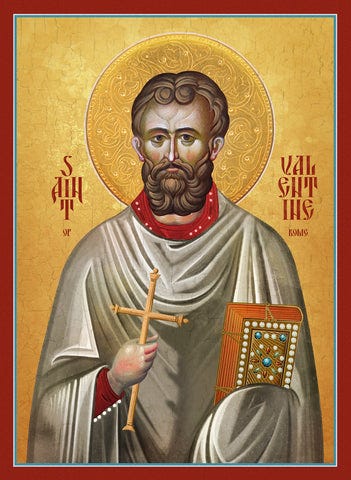Love is in The Air
Why is cupid bad at basketball?

Why is cupid bad at basketball?
Because when he shoots, someone else scores!
Was that lame? It probably was. Here’s another one;
How do you dish out ice cream on Valentine’s Day?
You sCupid out.
Okay, this is a good one I promise!
What do you call two birds in love?
Tweethearts!”
Jokes aside, it’s Valentine’s! Yay! The second most popular-card giving holiday right behind Christmas — because chivalry is dead, and card-giving makes up for the most romantic gesture for the most romantic holiday.
The History of Valentine’s Day
Every year on the 14th of February, we celebrate what is also known as Saint Valentine’s Day or the Feast of Saint Valentine. It evolved from its origins as a Christian feast day honouring early Christian martyrs by the name of Saint Valentine to become a prominent cultural, religious, and commercial celebration of romance and love in many parts of the world. Valentine’s Day is associated with many martyrdom tales, including Saint Valentine of Rome, imprisoned for helping Christians who were persecuted by the Roman Empire in the third century. Legend has it that Saint Valentine healed the blind daughter of his jailer.

Many later additions to the legend have connected it to the theme of love. For example, the 18th-century version of the tale asserts that he wrote the jailer’s daughter a letter signed “Your Valentine” as a farewell before his execution. Another tradition holds that Saint Valentine officiated weddings for Christian soldiers who were forbidden from getting married. Valentine’s Day was observed on February 14 according to the 8th-century Gelasian Sacramentary and by the 14th and 15th centuries, the notions of courtly love blossomed associating the ‘lovebirds’ of early spring with romantic love. It evolved into a time when couples would send greeting cards, flowers, and other tokens of their affection to one another in 18th-century England.
Doves, the winged Cupid, and the outline of a heart are symbols of Valentine’s Day today. Since the 19th century, handwritten Valentines have been replaced by mass-produced greeting cards. In Italy, Saint Valentine’s Keys are given to youngsters to prevent epilepsy (otherwise Saint Valentine’s Malady) and lovers as a “romantic symbol and an invitation to unlock the giver’s heart.” Although the day is a recognised feast day in the Anglican Communion and the Lutheran Church, it is not a public holiday in any nation.
Early modern England gave rise to the traditions of Valentine’s Day, which include sending greeting cards (sometimes known as “valentines”), providing candy, and giving flowers. By the 19th century, these traditions had spread throughout the English-speaking globe. These traditions, like those of Halloween or certain features of Christmas, extended to other nations in the late 20th and early 21st centuries (such as Santa Claus). Many East Asian nations observe Valentine’s Day, with Singaporeans, Chinese, and South Koreans spending the most on presents.
Some Unknown Facts about the Holiday of ‘Love’
1. Cupid, A Greek God

The first Cupid was also known as Eros, which is the Greek term for desire, dates back to 700 BC. Eros was the son of the goddess of love Aphrodite, who played havoc on the hearts of both gods and men during the Archaic era. He was portrayed as a young man in his late teens who was both attractive and dangerous since he would use his influence to induce romantic feelings.
2. How Many St. Valentine’s?
At the end of the fifth century, Pope Gelasius I abolished Lupercalia and established St. Valentine’s Day on February 14. But who was the patron saint of the occasion?
Much evidence points to one of two men with the same name: a third-century Roman priest who rebelled against Claudius II Gothicus (and was executed for it), or another priest from the same era who was from a town about 60 miles away in what is now Terni, Italy (he was also martyred by Claudius II). Some claim that these two Valentines were the same person, but the Catholic Education Resource Centre cites early martyrologies for three St. Valentines who all have feast days on February 14. This only furthers the confusion.
3. “Wear Your Heart on Your Sleeve” literally.
The earliest documented usage of the expression in writing was used by Shakespeare in Othello. Did the renowned bard come up with the term on his own or did he draw it from experience? Merriam-Webster speculates that the expression may have originated during the time of medieval jousts, when a knight may dedicate a match to a lady by wrapping an item of her clothing, such as a scarf, around his armour sleeve. My, my… how chivalrous!
4. The origin of XOXO ?!
Ever wondered what ‘XOXO… gossip girl’ meant? Or how kisses and hugs were signified by Xs and Os? Documents were reportedly signed with a simple X throughout the Middle Ages when most people were illiterate. This symbol is thought to have portrayed Christ on the crucifixion, which represented trust and loyalty. People would then kiss the X to symbolise their commitment, and over the years, the X changed into a smooch. Although it is unknown how O came to stand for a hug, others believe it was simply because it was equally as simple to type as X.
5. Will You Be My Valentine, Dear …
Don’t worry if you find yourself single on the most romantic day of the year. Like my single self and many other adults who bought Valentine’s Day presents for their dogs and cats in 2021, you may always celebrate it with your four-legged sweetheart. The total projected value of Valentine’s Day presents given to pets is an insane $2.14 billion! People would do anything for their pets. Anything.
6. Valentine’s Day Cards: Sales of the Year

As the practice of Valentine’s Day gained popularity, people started exchanging love notes and other small gifts. This custom probably made its way to America by the early 1700s, but it wasn’t until Esther A. Howland, the “Mother of the American Valentine” and the daughter of a Massachusetts stationer who had just graduated from Mount Holyoke Female Seminary, that mass-produced valentines gained popularity in the United States.
Her cards, which were created with actual lace and ribbons and inspired by English valentines, quickly became an instant success in the markets. Fast forward three centuries later, according to Hallmark, Valentine’s Day is now the second most popular card-giving occasion, right behind Christmas.
7. Chivalry was dead … till the Middle Ages
According to traditional lore, birds started mating around the middle of February, notably on February 14th, also known as St. Valentine’s Day. According to The Folklore Society, people back then frequently referred to dates by the saint the Church’s calendar had assigned to that day (there were no printed calendars and names were more accessible to remember than numbers). Funnily, Valentine’s Day accidentally came to be associated with pairing off and behaving like a bird.
8. The Victorian Romance

Roman goddess of love Venus (Cupid’s mother) loved red roses, and they have long been associated with passion. But men didn’t start delivering the flower to women they were courting until the Victorian era.
9. Candy Hearts were Medical Lozenges
The first candy-making machine was created in 1847 by Boston pharmacist Oliver Chase using a device that streamlined the lozenge-making procedure. Chase changed his attention to candy manufacturing with Necco wafers after seeing an opportunity to completely transform the candy industry.
10. All Hail King Henry VIII
Henry VIII of England issued a royal charter in 1537 designating February 14 as St. Valentine’s Day. And sure, he is the ruler who had six wives — two of whom he divorced, two he executed, and one of whom survived.
Single or not, you can celebrate Valentine’s Day! Many have this misconception that it is simply a day for lovers. Over time, the love grinch has vilified the meaning of this pleasant celebration by taking it out of context. It’s a day dedicated to honouring all the relationships in your life, including those with your parents, siblings, friends, pets, and anybody else you can think of! So, on this beautiful celebration of love, I wish you nothing but lasting love and happiness!
[Written by: Balvin Dhaliwal. Edited by: Michelle Lee]





